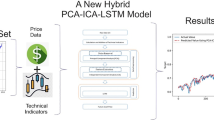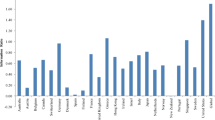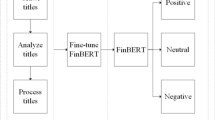Abstract
US common stocks are simultaneously traded on multiple trading centers. We study quotes and trades with millisecond time stamps during the flash crash of May 6, 2010, and document new findings about order dynamics when the fragmented market is under stress. First, relative to May 5, 2010, the number of trades and the number of quotes quadrupled on May 6, 2010. Second, during the flash crash, the proportional time of a trading center offering the best bid/ask quotes substantially reduced on all trading centers, while the effectiveness of turning best quotes into trades increased on almost all trading centers. Third and most importantly, we find significant changes in the level of trade (or quote) fragmentation during the flash crash for stocks with a high or low level of fragmentation, but no significant change for stocks with a fragmentation level in the middle range. These findings together demonstrate that, despite the dramatic increase in the number of quotes, there was insufficient liquidity on all trading centers, and stocks with a medium level of trade (or quote) fragmentation were most resilient to the sudden order flow shock.

Similar content being viewed by others
Notes
Two prominent examples of these market glitches are the IPO debacle of the third-largest US stock exchange, BATS, on March 23, 2012, and the huge trading loss of the market-maker firm, Knight Capital Group Inc, on August 1, 2012, which led to the firm being acquired eventually.
The executive summary of his report “Regulation NMS Part I: Loved or loathed and why many want it to die” is available at http://www.tabbgroup.com/PublicationDetail.aspx?PublicationID=1302.
See her speech at the Security Traders Association 80th Annual Market Structure Conference on October 2, 2013.
On April 21, 2015, Navinder Singh Sarao, a London-based futures trader, was arrested on charges in connection with his role in the flash crash. He allegedly used an automated trading program to manipulate the market for E-Mini S&P 500 futures contracts (E-Minis) on the Chicago Mercantile Exchange (CME). His implementation of high-speed manipulative trading strategies might have triggered the Flash Crash (DoJ 2015). Sarao pleaded guilty to fraud in November 2016.
We sincerely thank an anonymous reviewer for comments and suggestions that motivate the analysis in this section.
We thank an anonymous reviewer for suggesting this direction of future research.
References
Amihud, Y., B. Lauterbach, and H. Mendelson. 2003. The value of trading consolidation: Evidence from the exercise of warrants. Journal of Financial and Quantitative Analysis 38: 829–846.
Angel, J.J., L. Harris, and C.S. Spatt. 2011. Equity trading in the 21st Century. Quarterly Journal of Finance 1: 1–53.
Barclay, M., T. Hendershott, and D.T. McCormick. 2003. Competition among trading venues: Information and trading on electronic communication networks. Journal of Finance 58: 2637–2665.
Biais, B., P. Hillion, and C. Spatt. 1995. An empirical analysis of the limit order book and order flow in Paris Bourse. Journal of Finance 50: 1655–1689.
Christie, W., and P. Schultz. 1994. Why do NASDAQ market makers avoid odd-eighth quotes? Journal of Finance 49: 1813–1840.
Chowdry, B., and V. Nanda. 1991. Multimarket trading and market liquidity. Review of Financial Studies 4: 483–511.
Cohen, K.J., S.F. Maier, R.A. Schwartz, and D.K. Whitcomb. 1982. An analysis of the economic justification for consolidation in a secondary security market. Journal of Banking & Finance 6: 117–136.
Department of Justice (DoJ). 2015. Futures trader charged with illegally manipulating stock market, contributing to the May 2010 market “Flash Crash”. Office of Public Affairs. www.justice.gov/opa/pr/futures-trader-charged-illegally-manipulating-stock-market-contributing-may-2010-market-flash.
Easley, D., M.L. de Prado, and M. O’Hara. 2011. The microstructure of the “Flash Crash”: Flow toxicity, liquidity crashes, and the probability of informed trading. Journal of Portfolio Management 37: 118–128.
Ellis, K., R. Michaely, and M. O’Hara. 2002. The making of a dealer market: From entry to equilibrium in the trading of Nasdaq stocks. Journal of Finance 57: 2289–2316.
Foucault, T. 1999. Order flow composition and trading costs in a dynamic limit order market. Journal of Financial Markets 2: 99–134.
Foucault, T., O. Kadan, and E. Kandel. 2005. Limit order book as a market for liquidity. Review of Financial Studies 18: 1171–1217.
Griffiths, M., B. Smith, D. Turnbull, and R.W. White. 2000. The costs and the determinants of order aggressiveness. Journal of Financial Economics 56: 65–88.
Goldstein, M.A., A.V. Shkilko, B.F. Van Ness, and R.A. Van Ness. 2008. Competition in the market for Nasdaq securities. Journal of Financial Markets 11: 113–143.
Harris, L. 1993. Consolidation, fragmentation, segmentation, and regulation. Financial Markets, Institutions & Instruments 2: 1–28.
Hasbrouck, J. 1995. One security, many markets: Determining the contributions to price discovery. Journal of Finance 50: 1175–1199.
Hasbrouck, J. 2013. High frequency quoting: Short-term volatility in bids and offers. Working paper.
Hasbrouck, J., and G. Saar. 2009. Technology and liquidity provision: The blurring of traditional definitions. Journal of Financial Markets 12: 143–172.
Hendershott, T., and C. Jones. 2005. Island goes dark: Transparency, fragmentation, and regulation. Review of Financial Studies 18: 743–793.
Hendershott, T., and P.C. Moulton. 2010. Automation, speed, and stock market quality: The NYSE’s Hybrid. Journal of Financial Markets 14: 568–604.
Kirilenko, A., A.S. Kyle, M. Samadi, and T. Tuzun. 2011. The Flash Crash: the impact of high frequency trading on an electronic market. Working paper.
MacKinlay, C.A. 1997. Event studies in economics and finance. Journal of Economic Literature 35: 13–39.
Madhavan, A. 1995. Consolidation, fragmentation, and the disclosure of trading information. Review of Financial Studies 8: 579–603.
Madhavan, A. 2012. Exchange-traded funds, market structure, and the flash crash. Financial Analyst Journal 68: 20–35.
Mendelson, H. 1987. Consolidation, fragmentation, and market performance. Journal of Financial and Quantitative Analysis 22: 189–208.
Muravyev, D., N.D. Pearson, and J.P. Broussard. 2013. Is there price discovery in equity options? Journal of Financial Economics 107: 259–283.
Obizhaeva, A.A., and J. Wang. 2013. Optimal trading strategy and supply/demand dynamics. Journal of Financial Markets 16: 1–32.
O’Hara, M. 2015. High frequency market microstructure. Journal of Financial Economics 116: 257–270.
O’Hara, M., and M. Ye. 2011. Is market fragmentation harming market quality? Journal of Financial Economics 100: 459–474.
Ranaldo, A. 2004. Order aggressiveness in limit order book markets. Journal of Financial Markets 7: 53–74.
Roşu, I. 2009. A dynamic model of the limit order book. Review of Financial Studies 22: 4601–4641.
Seppi, D.J. 1997. Liquidity provision with limit orders and a strategic specialist. Review of Financial Studies 10: 103–150.
Securities Exchange Commission (SEC). 2010. Concept release on equity market structure. Release No. 34-61358; File No. S7-02-10.
Securities Exchange Commission (SEC). 2013. Equity market structure literature review. Part I: Market fragmentation.
Stoll, H.R., et al. 1982. Comments ‘An analysis of the economic justification for consolidation in a secondary security market’ by Kalman J. Cohen. Journal of Banking & Finance 6: 75–107.
U.S. Commodities Futures Trading Commission and U.S. Securities and Exchange Commission (CFTC/SEC). 2010. Findings regarding the market events of May 6, 2010.
Author information
Authors and Affiliations
Corresponding author
Additional information
Publisher's Note
Springer Nature remains neutral with regard to jurisdictional claims in published maps and institutional affiliations.
Rights and permissions
About this article
Cite this article
Ang, J.S., Hunsader, K.J. & Zhang, S. Order dynamics during the flash crash. J Asset Manag 20, 365–383 (2019). https://doi.org/10.1057/s41260-019-00129-1
Revised:
Published:
Issue Date:
DOI: https://doi.org/10.1057/s41260-019-00129-1




